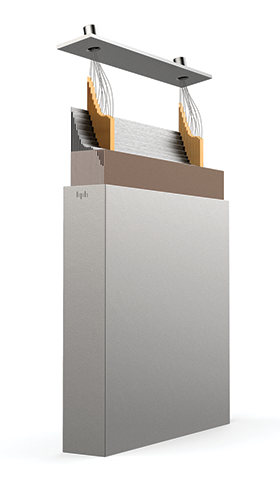Quantum leap in battery technology
25 October 2023
Editor's Choice
Power Electronics / Power Management

The Bonn-based company High Performance Battery (HPB) has achieved a decisive breakthrough in battery and storage technology: a team led by Prof. Dr. Günther Hambitzer has developed the world’s first solid-state battery with outstanding properties to production readiness. The applications range from stationary storage for home and industrial use to charging infrastructures and the mobility segment.
“We are not only opening a new chapter in battery technology,” explains Sebastian Heinz, CEO of HPB, “but are also making a decisive contribution to the energy transition and climate protection worldwide.”
The data and properties measured so far show significantly better values and characteristics compared to the currently dominant lithium-ion batteries:
Longevity
While conventional lithium-ion batteries degrade after between 500 and 2500 charging cycles, the HPB solid-state battery currently has more than 12 500 charging cycles, with a comparable load. Since these cells have not yet reached the end of their life, this number will continue to increase steadily.
Safety
The new HPB solid-state electrolyte is non-flammable, and thus considerably safer than the flammable liquid electrolytes of conventional lithium-ion batteries.
Sustainability
The HPB solid-state battery shows a 50% better environmental balance compared to current lithium-ion technology. This makes it the ‘green key to the energy and mobility revolution’.
Conductivity
Compared to the liquid electrolytes commonly used today, the HPB solid-state electrolyte has an enormously improved conductivity. This is decisive for the available power from the battery cell. The HPB solid-state electrolyte shows a higher conductivity at -40°C than conventional liquid electrolytes at their optimum at 60°C. These properties have been confirmed by independent partners and research institutes in the temperature range from -40°C to 60°C. In this way, the HPB solid-state electrolyte ensures that sufficient power is available even at extreme temperatures. This eliminates the need to preheat the batteries in winter.
Further reading:
20 years of precision, progress and purpose – the Jemstech journey
Jemstech
Editor's Choice Manufacturing / Production Technology, Hardware & Services
Twenty years ago, Jemstech began as a small, determined venture built on technical excellence and trust. Today, it stands among South Africa’s leading electronic manufacturing service providers.
Read more...
A new era in wire bond inspection
Techmet
Editor's Choice Manufacturing / Production Technology, Hardware & Services
Viscom is developing a 3D wire bond inspection system that incorporates substantially improved sensors, a high image resolution, and fast image data processing.
Read more...
Energy harvesting using a battery-less IoT system
NuVision Electronics
Editor's Choice Power Electronics / Power Management
Energy Harvesting plays an essential role in the foundation of ambient IoT, a new generation of ultra-low power connected devices that operate by drawing energy from their environment instead of relying on traditional batteries.
Read more...
Questing for the quantum AI advantage
Editor's Choice AI & ML
Two quantum experts disclose high hopes and realities for this emerging space.
Read more...
From the editor's desk: Progress meets reality
Technews Publishing
Editor's Choice
In the first half of 2025, renewable energy, incorporating solar, wind, and to a lesser degree hydropower and bioenergy, has generated more electricity globally than coal did.
Read more...
From ER to effortless: The 15-year journey of Seven Labs Technology
Seven Labs Technology
Editor's Choice Manufacturing / Production Technology, Hardware & Services
What started as a business likened to an ‘ER’ for electronic components has today grown into a trusted partner delivering kitting services and full turnkey solutions – taking the effort out of electronics and helping customers truly ‘Move to Effortless.’
Read more...
The trends driving uptake of IoT Platform as a Service
Trinity IoT
Editor's Choice Telecoms, Datacoms, Wireless, IoT
IoT platforms, delivered as a service, are the key that will enable enterprises to leverage a number of growing trends within the IT space, and access a range of benefits that will help them grow their businesses.
Read more...
Interlynx-SA: Engineering SA’s digital backbone
Interlynx-SA
Editor's Choice
At the heart of the industrial shift towards digitalisation lies the growing demand for telemetry, Industrial IoT (IIoT), advanced networking, and robust data solutions, and Interlynx-SA is meeting this demand.
Read more...
Converting high voltages without a transformer
Altron Arrow
Editor's Choice Power Electronics / Power Management
With appropriate power converter ICs, such as the LTC7897 from Analog Devices, many applications can be suitably powered without having to use complex and cost-intensive transformers.
Read more...
Grinn Global: From design house to SoM innovator
Editor's Choice
From its beginnings as a small electronic design house, Grinn Global has moved into the spotlight as a system-on-module innovator working alongside technology giants like MediaTek.
Read more...


